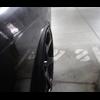Hks Low Mount Flange Change
Announcements
-
Similar Content
-
Latest Posts
-
By Dose Pipe Sutututu · Posted
What I suggest doesn't have a 40° delta and won't have all your lurching, idle hunting issues. Not to mention it's how most shops do it too. So yes on theory your method "works" however once it goes into that hunt it takes much longer to settle as the PID idle strategy is working off it's tits to try target the set RPM. -
By Dose Pipe Sutututu · Posted
Ain't that the truth. I tried to save money, got my 1st motor built by a small "Facebook accredited" workshop, motor blew up in 2x track days. 2nd motor, took it to Birrong Automotive and it's seen 6 solid track days and not a single issue, except frying the clutch. -
Poor man pays twice. That’s how this works.
-








Recommended Posts
Create an account or sign in to comment
You need to be a member in order to leave a comment
Create an account
Sign up for a new account in our community. It's easy!
Register a new accountSign in
Already have an account? Sign in here.
Sign In Now